

getty
ETF investing offers several advantages. ETFs, give investors the benefit of trading flexibility, portfolio diversification, and risk management. For today’s market conditions, this is especially relevant. Stocks have been on quite a run since they bottomed last March. However, there are still several headwinds and concerns. ETFs are a great way to diversify your portfolio and hedge these risks while still keeping some upside. Especially if you want to invest in a hot sector but do not necessarily know which stock to pick or if you’d prefer not to take any asset-specific risks, with valuations quite frothy right now for many individual stocks, ETFs can help. Q.ai’s deep learning algorithms have identified several Top Dividend ETFs, Top Tech ETFs, Top Growth ETFs, Top Value ETFs, and Top Consumer ETFs based on 90-day, 30-day, and 1-week fund flows.
Sign up for the free Forbes AI Investor newsletter here to join an exclusive AI investing community and get premium investing ideas before markets open.
Top Dividend ETFs
iShares Core High Dividend ETF (HDV)
The iShares Core High Dividend ETF

Simple moving average of iShares Core High Dividend ETF (HDV)
iShares Select Dividend ETF (DVY)
The iShares Select Dividend ETF
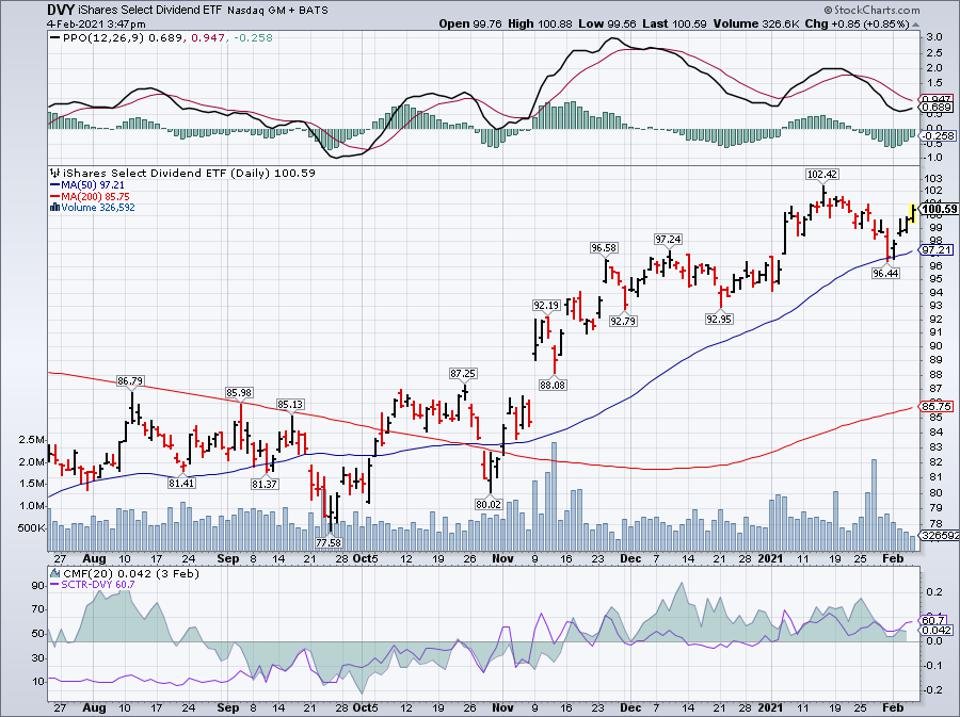
Simple moving average of iShares Select Dividend ETF (DVY)
SPDR S&P Dividend ETF (SDY)
The last Top Dividend ETF on our list is the SPDR S&P Dividend ETF

Simple moving average of SPDR S&P Dividend ETF (SDY)
Top Tech ETFs
VanEck Vectors Semiconductor ETF (SMH)
The first Top Tech ETF this month according to our AI systems is the VanEck Vectors Semiconductor ETF
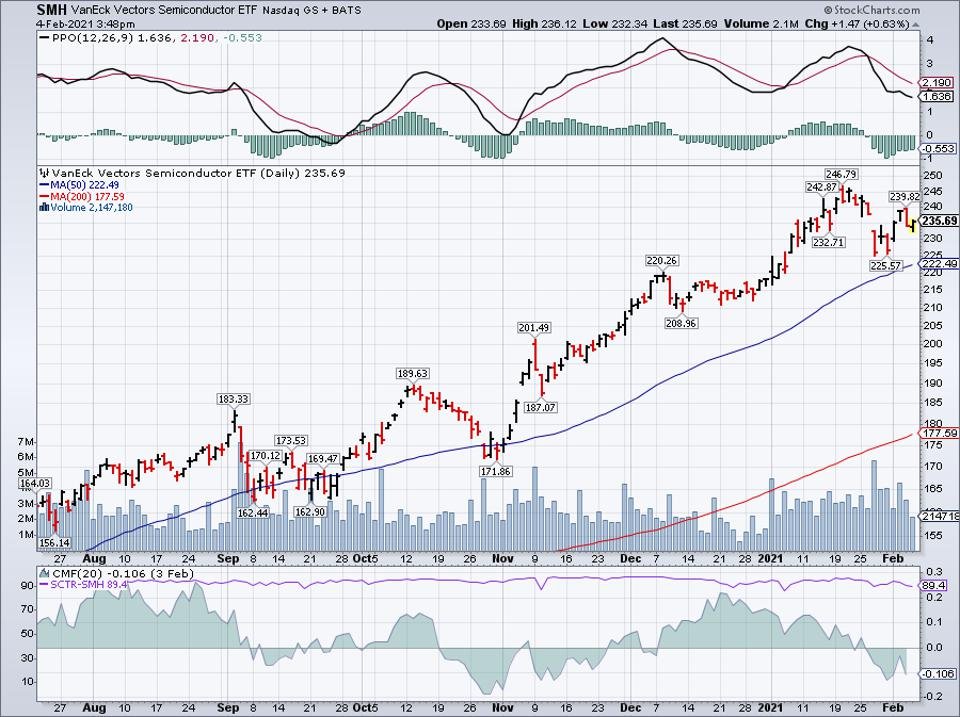
Simple moving average of VanEck Vectors Semiconductor ETF (SMH)
Technology Select Sector SPDR Fund (XLK)
The next Top Tech ETF is the Technology Select Sector SPDR Fund
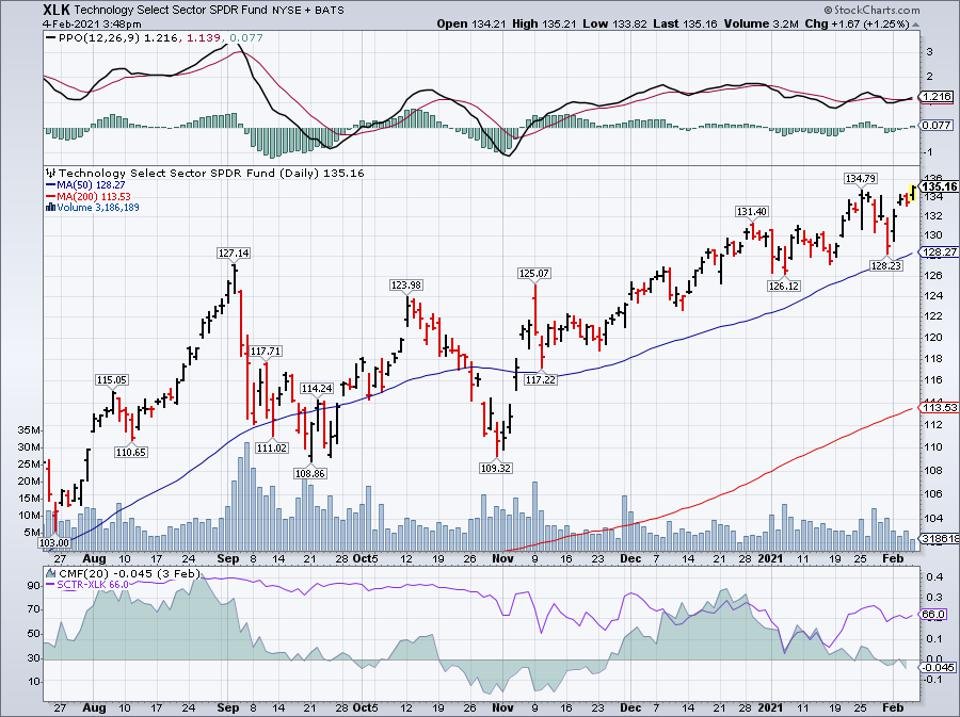
Simple moving average of Technology Select Sector SPDR Fund (XLK)
Invesco QQQ Trust (QQQ)
The Invesco QQQ
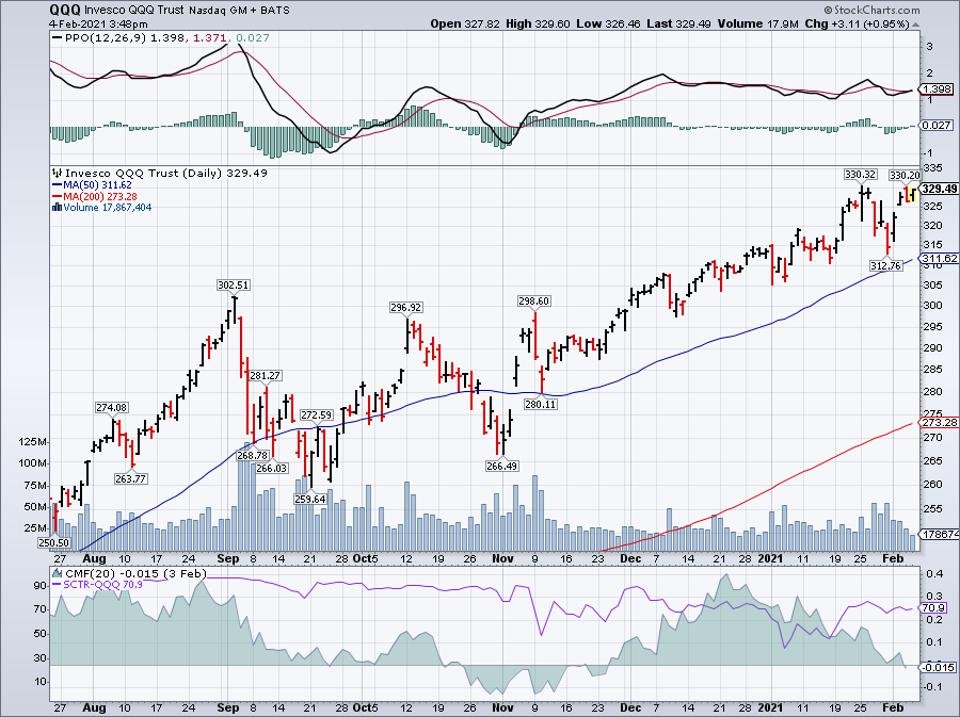
Simple moving average of Invesco QQQ Trust (QQQ)
Top Growth ETFs
iShares Russell Top 200 Growth ETF (IWY)
The iShares Russell 2000 Growth ETF

Simple moving average of iShares Russell Top 200 Growth ETF (IWY)
Vanguard Growth ETF (VUG)
The next Top Growth ETF is the Vanguard Growth ETF
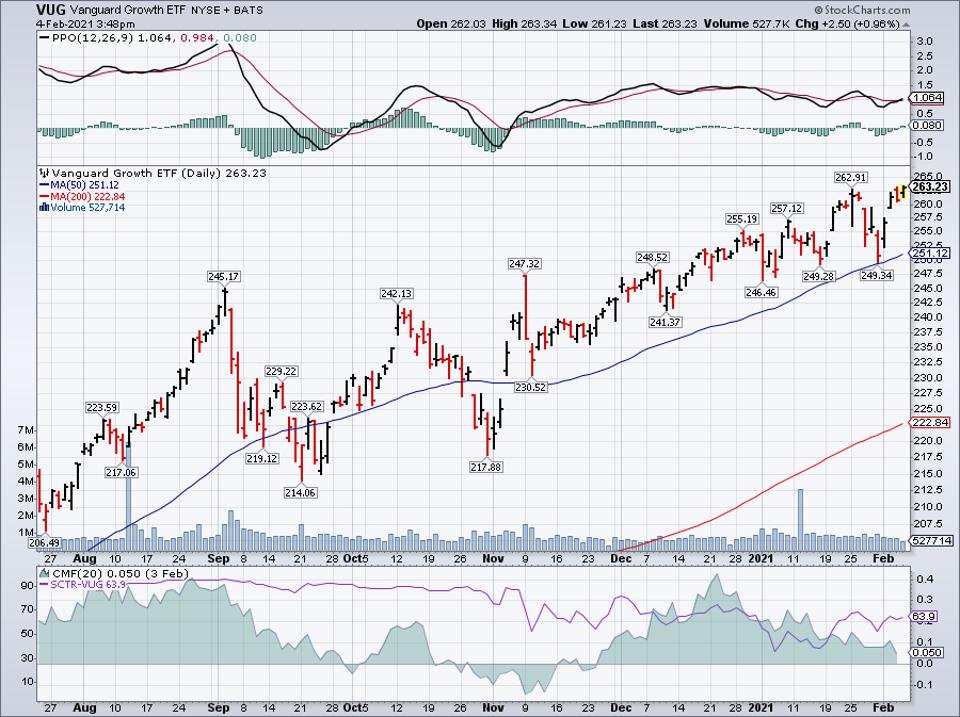
Simple moving average of Vanguard Growth ETF (VUG)
Vanguard Mega Cap Growth ETF (MGK)
The Vanguard Mega Cap Growth ETF
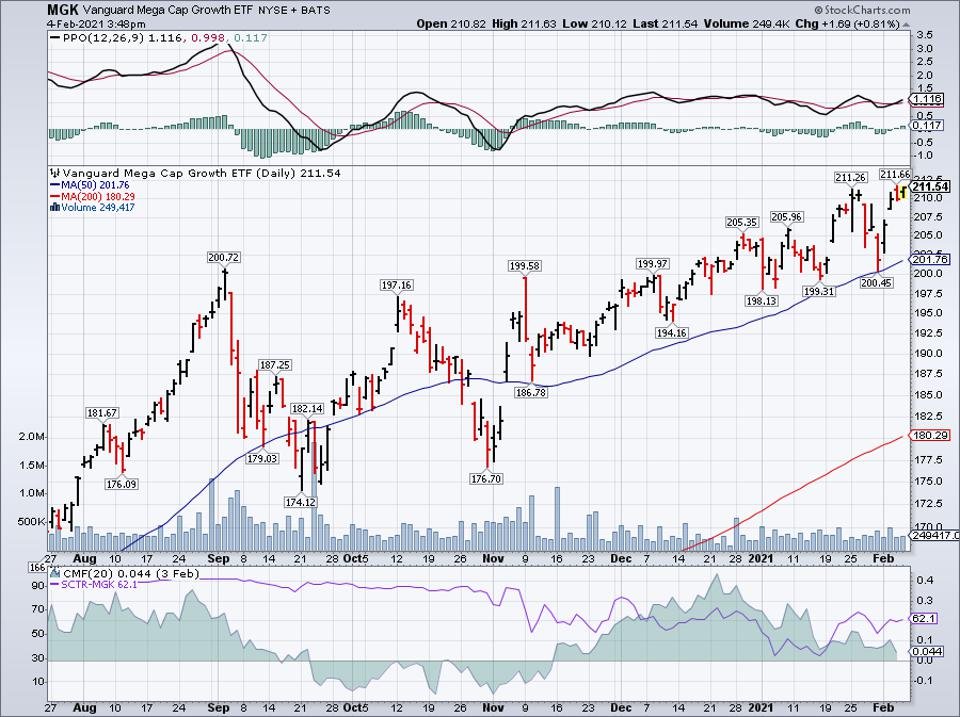
Simple moving average of Vanguard Mega Cap Growth ETF (MGK)
Top Value ETFs
iShares S&P Mid-Cap 400 Value ETF (IJJ)
The first Top Value ETF on our list is the iShares S&P Mid-Cap 400 Value ETF
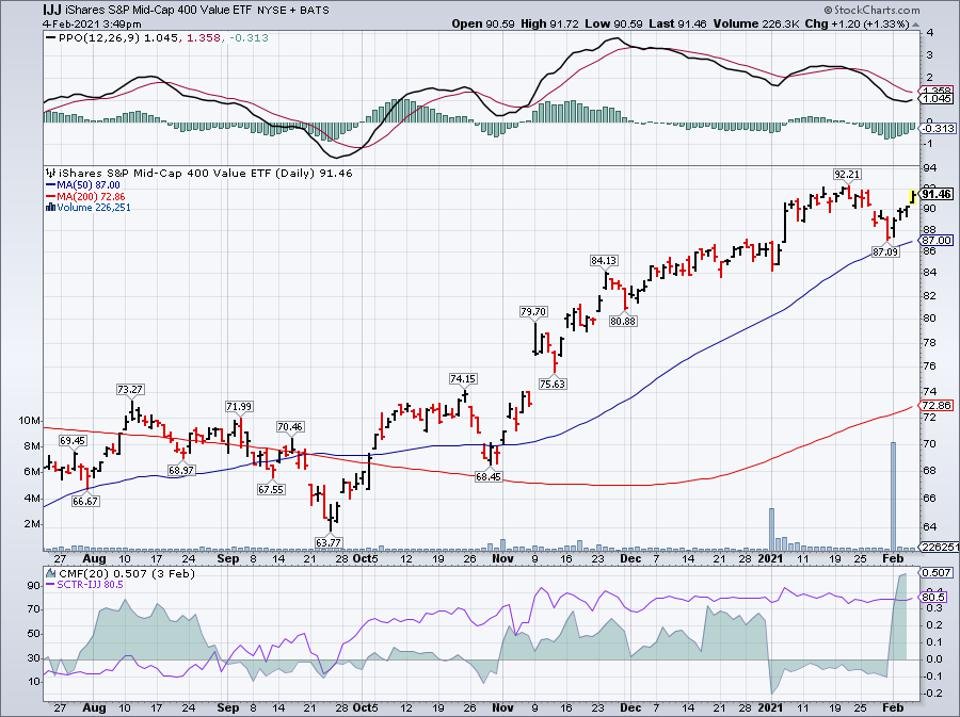
Simple moving average of iShares S&P Mid-Cap 400 Value ETF (IJJ)
iShares Russell 2000 Value ETF (IWN)
The next Top Value ETF is the iShares Russell 2000 Value ETF
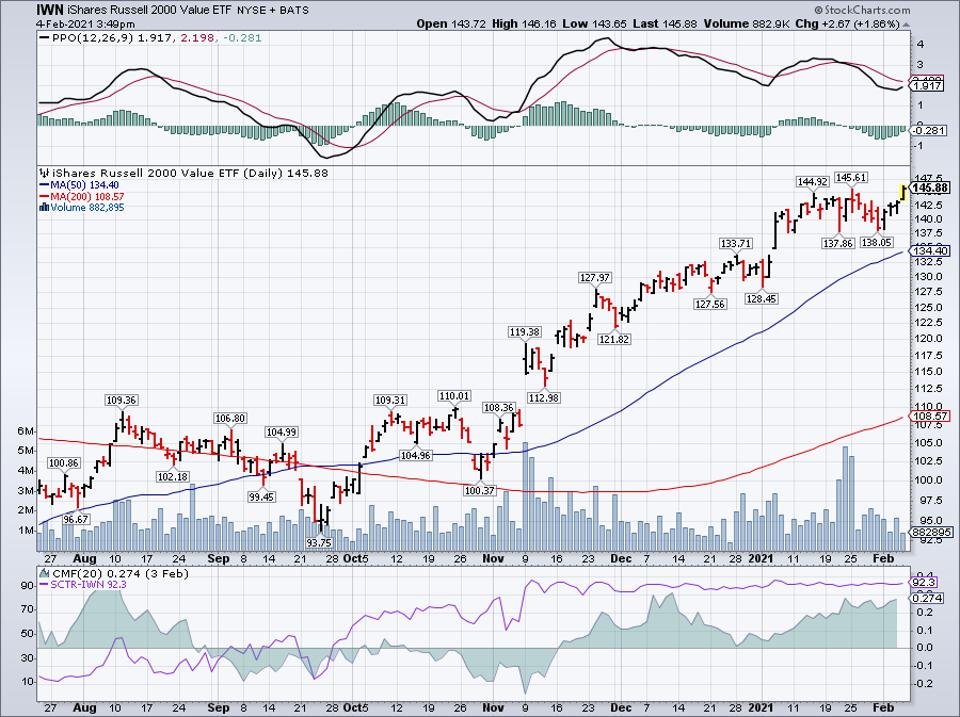
Simple moving average of iShares Russell 2000 Value ETF (IWN)
First Trust Large Cap Value AlphaDEX Fund (FTA)
The last Top Value ETF on our list is the First Trust Large Cap Value AlphaDEX Fund

Simple moving average of First Trust Large Cap Value AlphaDEX Fund (FTA)
Top Consumer ETFs
Vanguard Consumer Discretionary ETF (VCR)
The Vanguard Consumer Discretionary ETF
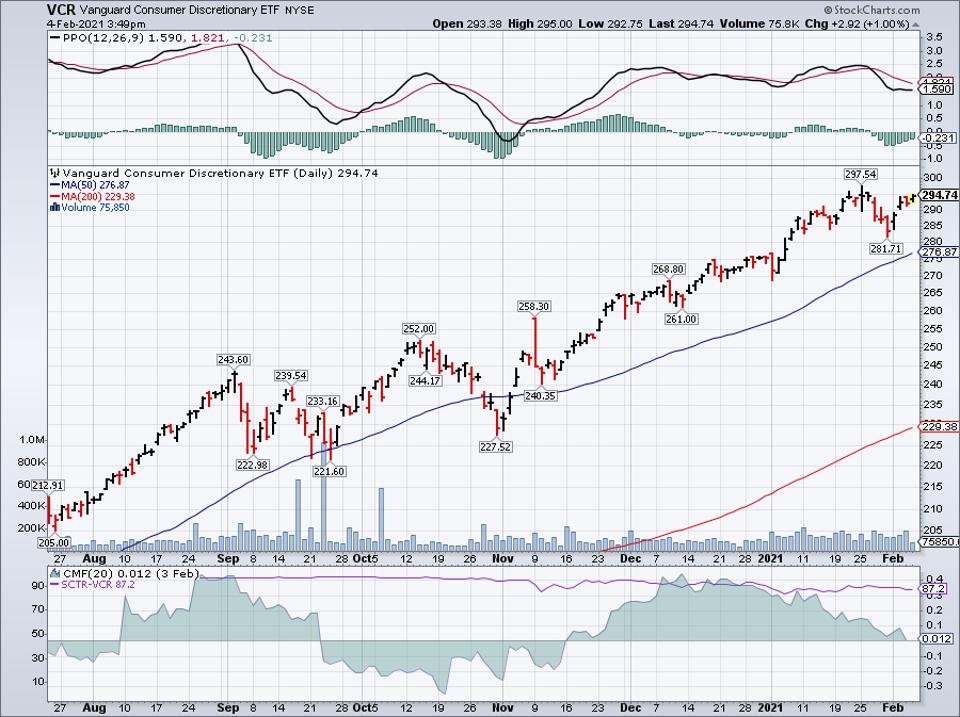
Simple moving average of Vanguard Consumer Discretionary ETF (VCR)
iShares US Consumer Goods ETF (IYK)
The iShares US Consumer Goods ETF
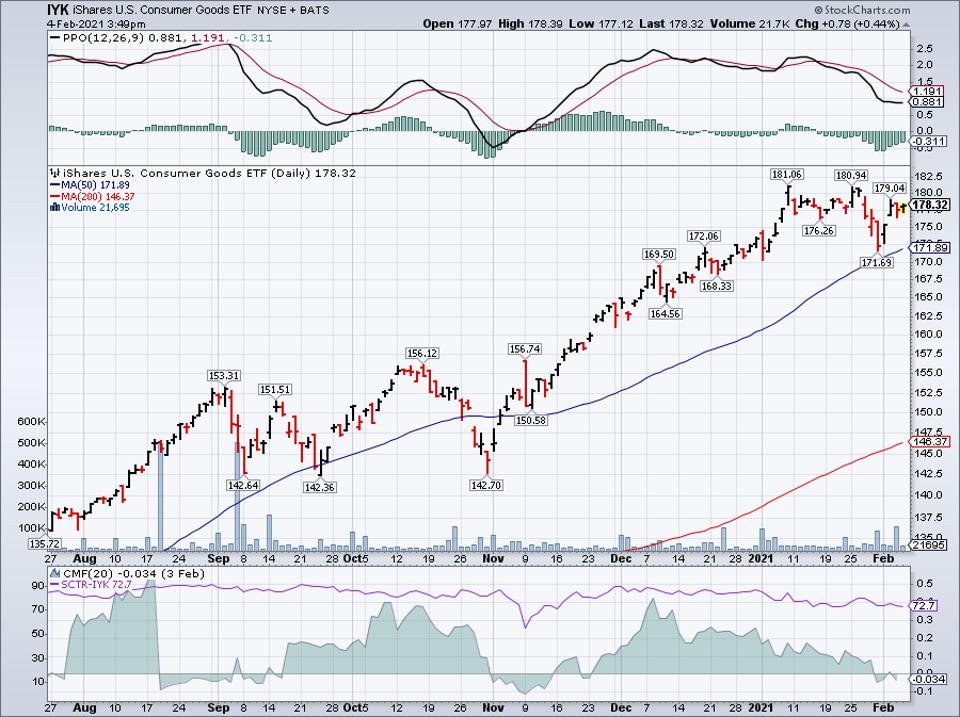
Simple moving average of iShares US Consumer Goods ETF (IYK)
SPDR S&P Homebuilders ETF (XHB)
Our final Top Consumer ETF for this month is the SPDR S&P Homebuilders ETF

Simple moving average of SPDR S&P Homebuilders ETF (XHB)
Liked what you read? Sign up for our free Forbes AI Investor Newsletter here to get AI driven investing ideas weekly. For a limited time, subscribers can join an exclusive slack group to get these ideas before markets open.